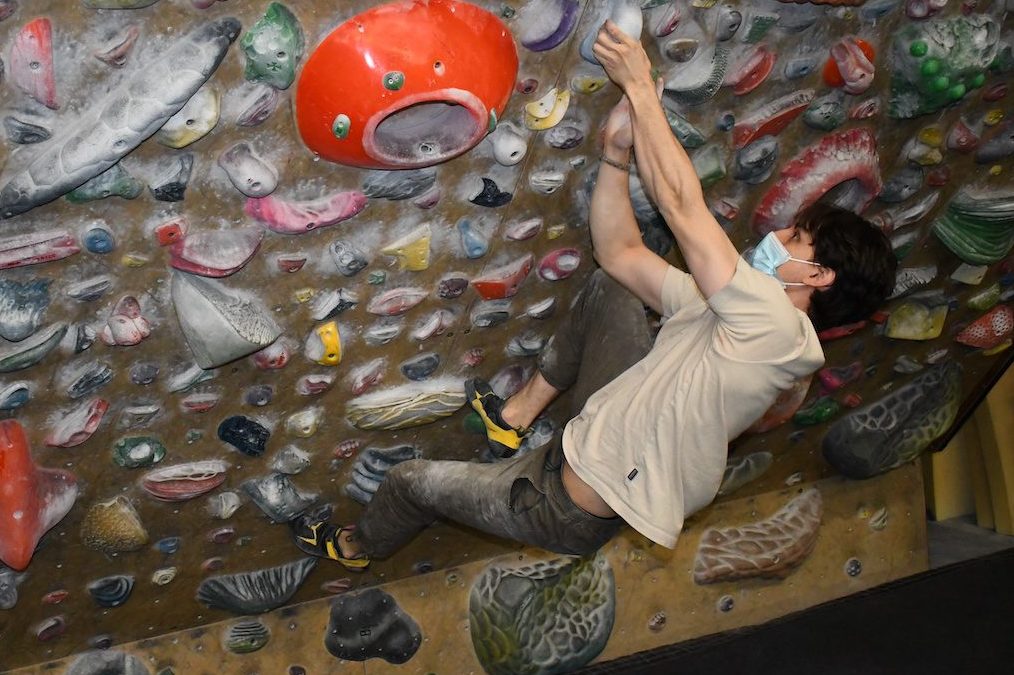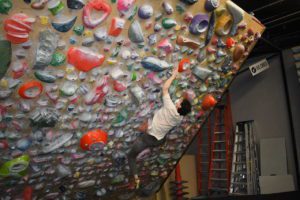How to Use a Spray Wall
The spray wall is a climbing institution, but how can you use it to break your plateau this winter and how does it differ from standard boards?

With training season around the corner, it’s time to take a look at our goals. For many boulderers and lead climbers, the winter is a time to break through plateaus and refocus on outdoor projects. We want to be ready for Spring.
With so many different ways to train, it is hard to know what’s right. Picking one thing at a time is a great way to improve, but it can also be tiring. For example, weighted pull ups make climbing difficult. Board climbing offers a powerful solution to the training problem by combining many aspects of training into a single discipline.
Board climbing strengthens grip and finger strength, all while pushing climbers to develop their technique. It strengthens the lumbar, lats, and biceps, while working the smaller stabilizing muscles. Standard boards make training easy because the problems have already been set. Spray walls take a bit more consideration but can offer even greater advantages than standard boards.
The biggest differences between a spray wall and a standard board are the holds. Spray boards do not need to stick to a single hold size or bolt pattern allowing for a greater variety of hold sizes and shapes.
Generally, spray walls have greater hold density and force climbers to develop their own problems. Beginning with the hold shape, you will notice most standard boards offer holds of the same type.
Although the materials differ, standard boards make finger intensive grips that all feel relatively the same. Naturally a Tension pinch greatly differs from a MoonBoard crimp, but both hold sets benefit climbers who move in a dynamic style. On a spray board, large shapes can make for technical sequences that are several grades more challenging if dead-pointed through.
This is this first advantage of the spray board. Large grips force three-dimensional movement and the precarious heel hooks we might found outside. Hold size and type aside, the density gives climbers space to make a lot more problems. Routesetting provides a greater understanding of movement and is a necessary component of any climber’s development.
Simply setting boulder problems on a spray wall can change a person’s perspective dramatically. With that said, it does take a little practice. Try and set problems with as great a variety of holds as possible. By pursuing unique grips, you will achieve unique movement.
With that said, let’s move onto the chaotic spray the describes a spray wall’s hold distribution. Standard boards all follow the same eight-inch by eight-inch bolt pattern. Kilter is starting to mess with this format and has begun to provide greater density as a result. No matter how you slice it, greater potential for hold density exists on the spray wall. As such, there is more opportunity for varying distances between prospective movements.
If you climb primarily on Moon, Tension, and Kilter boards for your board training, you will notice that you become used to the distances between holds. Certain moves between boards begin to feel identical because, in many ways, they are. A spray wall keeps you on your toes and trying different sorts of movements.
Another problem with standard boards is that people love setting with a kicker. A spray wall allows complete autonomy and you can produce movement that truly cannot be replicated by many of the more famous board problems.
The final question comes down to this: How do I use a spray wall? There are numerous approaches, but this is one: use it as a training tool for your goal.owHow
Sometimes that means building project simulators and other times that means running endurance circuits. For day-to-day bouldering, however, consider what you are trying to do. Do you want to become more efficient at projecting or better at flashing?
If you want to be better at flashing, build problems, analyze, and attempt. If you want to get better at projecting, build harder problems and do the same thing. The key between these components, however, comes from one area in particular: analysis.
Climb the problem with purpose. A spray board offers a distracting array of holds. Only by visualizing the problem will you be able to flash or send quickly. As the movement becomes more difficult, you will have to imagine the feeling of the move you have not yet stuck. You are capable of this; it will just take a lot of visualization. By climbing the boulder in your head while you are resting, you will not be surprised upon earning the next hold.
By considering how you fall, you will learn how to not fall there again. Video can be helpful for this process as well. Although we each have a mental picture of how we are moving on the wall, video allows us to superimpose that picture on our movement and then draw conclusions.



